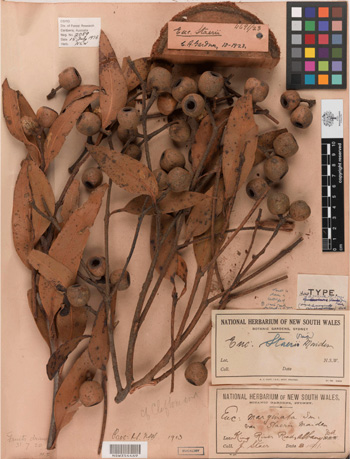
The latest issue of the Academy’s journal, Historical Records of Australian Science, has historical articles, biographical memoirs and a suite of book reviews.
Alexandra Ludewig’s fascinating article uses a biographical lens to examine the intersection of Western science and commerce in the collecting and naming of the Albany Blackbutt, Eucalyptus staeri. The author argues that this process provides an opportunity to reconsider the long-established Western hegemonial stronghold on nomenclature, and reflect on what it might mean to Indigenise and decolonise herbarium specimens.
Professor Ludewig writes: “As the example of E. staeri shows, the naming practice for Australia’s immense biodiversity bears the stamp of colonialism. The European convention, which had been firmly established in the eighteenth century, was exported to every corner of the world over the following decades, displacing local languages and knowledge. Indeed, it led to prominent European scientists—in the main white men—inscribing the names of European collectors—mostly other white men—and European ways of knowing on plants well-known to local Indigenous populations in their vernacular.
“When records are amended … it provides a welcome opportunity to reconsider the long-established Western hegemonial stronghold in botany by finally inserting whatever knowledge can be gleaned from our Indigenous brothers and sisters about their nature appreciation.”
The other article is the last of a series about the relationship between CSIRO and industry, examining the organisation’s structure and policies over almost a century and bringing the story up to 2010. The authors are all former employees of the organisation who have deep understandings of what happened and why.
The scientists whose lives and work are described in the biographical memoirs could not be more different, but their scientific achievements were distinctly Australian. Roy Woodall was an exploration geologist who worked for Western Mining Corporation, leading teams of specialists who found orebodies that yielded metals such as aluminium, gold, copper and uranium. The richest and deepest, and therefore the most challenging was at Olympic Dam in South Australia. George Rogers, however, in contrast to Woodall’s hard rocks, worked on softer materials like wool and feathers, and was a specialist in the biosynthesis of hair keratin proteins. This was a field in which Australian scientists made unique contributions, and also one that saw great advances in electron microscopy and molecular genetics that Rogers mastered and used in his long career.
The book reviews feature a number of books that are accessible to a broad readership. It is interesting to note that a number of the authors and reviewers have published in Historical Records of Australian Science, and that one book—Eclipse Chasers—is especially topical, given the solar eclipse visible from parts of Australia earlier this year. It includes a ‘where and when’ guide to four more eclipses over the next fifteen years.
A special issue of the journal is planned for July 2024 that will contain articles about the history of Australasian plant pathology, a scientific discipline that has been of vital importance in combating disease in Australian and New Zealand agriculture and the pastoral industry, and has informed quarantine practices. The issue will be sponsored by the Australasian Plant Pathology Society (APPS) with specialist historical contributions by members.
Much of the content of the journal is publicly available as open access, and Fellows of the Academy are able to access all content by logging into the Academy website and using the link on the Fellows page. The Academy also publishes the biographical memoirs of Fellows on its website following publication in the journal.
The Academy encourages authors to contact the editors to discuss their ideas for articles.
Find out more about Historical Records of Australian Science.
The journal editors are Dr Sara Maroske and Professor Ian D. Rae. This article was adapted from the editors’ introduction to the latest issue of the journal.
© 2025 Australian Academy of Science